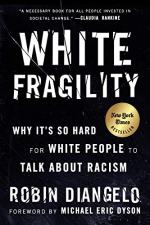
|
| Name: _________________________ | Period: ___________________ |
This quiz consists of 5 multiple choice and 5 short answer questions through Chapter 8.
Multiple Choice Questions
1. Who have been the greatest beneficiaries of affirmative action?
(a) White men.
(b) White women.
(c) Men of color.
(d) Women of color.
2. What happens when whites employ terms that connote physical violence to describe their feelings toward being challenged, as stated in Chapter 8?
(a) They subject themselves to danger from other whites.
(b) They are harmful to other white people.
(c) They subject themselves to ridicule.
(d) They distort the real direction of danger between whites and others.
3. What happens when disquilibrium occurs, as stated in Chapter 7?
(a) White solidarity happens but only in certain situations.
(b) Nothing happens.
(c) White fragility restores equilibrium and returns the capital lost.
(d) White fragility does not restore equilibrium.
4. What do people generally think constitutes a "good" neighborhood, as stated in Chapter 2?
(a) A mostly white population.
(b) Good schools.
(c) A mostly POC population.
(d) An ethically varied population.
5. At what point in her life did Diangelo experience a challenge to her racial identity?
(a) When she was a child.
(b) When she was a baby.
(c) When she was a teenager.
(d) When she was a full adult.
Short Answer Questions
1. What, according to Diangelo in Chapter 6, must white people do to challenge the ideologies of race?
2. What does the birdcage metaphor describe?
3. Where does Diangelo belong, as stated in Chapter 4?
4. What is capital, as stated in Chapter 7?
5. How might progressive whites respond in racism workshops like the ones Diangelo leads?
|
This section contains 354 words (approx. 2 pages at 300 words per page) |

|




